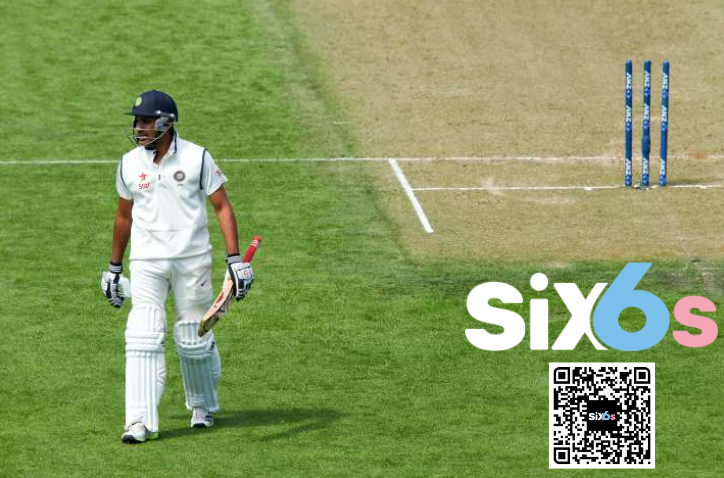Curious about the duration of a Test cricket match? Dive into this comprehensive guide to understand the intricacies of the longest format of cricket, including its five-day duration, potential variations, and the factors that influence match lengths.

Cricket, often referred to as the “gentleman’s game,” offers a variety of formats that cater to different tastes and preferences. One of the most iconic and enduring formats is Test cricket, known for its rich history, strategic depth, and challenging gameplay. However, if you’re new to the world of cricket, you might be wondering, “What is the duration of a Test cricket match?” In this article, we will explore the intricacies of Test cricket, including its traditional five-day duration, potential variations, and the factors that can influence the length of a Test match.
Unveiling the Format: Test Cricket at a Glance
Subcategory: Understanding Test Cricket
Before we dive into the duration of a Test cricket match, let’s take a brief look at the format itself. Test cricket is the longest and oldest format of the sport, characterized by several unique features:
- Five Days: Traditionally, Test matches are scheduled to be played over five consecutive days, with each team getting two innings to bat and two innings to bowl. This extended duration allows for a comprehensive examination of players’ skills, stamina, and adaptability.
- Red Ball: Test matches are played with a red cricket ball, which tends to swing more than the white ball used in shorter formats. This adds an extra layer of complexity for both batsmen and bowlers.
- Strategic Play: Test cricket rewards patience, strategy, and tactical thinking. Teams often employ defensive and offensive strategies to gain an advantage over their opponents.
- Records and Legacy: Many of the most cherished records and cricketing moments have been established in Test cricket. Legendary players like Sir Donald Bradman, Sachin Tendulkar, and Sir Vivian Richards have made their mark in this format.
The Standard Duration: Five Days of Test Cricket
Subcategory: The Traditional Format
The standard duration of a Test cricket match is five days. Here’s a breakdown of how these days are typically structured:
Batting dominance on days 1 and 2
- Day 1: The team winning the toss usually chooses to bat first. The first day often sees batsmen accumulating runs, trying to build a solid foundation for their team’s innings.
- Day 2: Batting continues, and the team in the crease aims to post a substantial total. Bowlers strive to take wickets to put pressure on the batting side.
Changing balances on Day 3
- Day 3: By this day, the pitch may start to show signs of wear and tear, making it more favorable for bowlers. The balance of power can shift, with bowlers looking to exploit any assistance from the pitch.
Day 4: Critical Phase
- Day 4: This is often a critical phase of the match. If the team batting first has posted a substantial total, they may look to declare their innings and set a target for the opposing team. Alternatively, if the match is evenly poised, both teams continue to battle for dominance.
Day 5: Climactic Finish
- Day 5: The final day is where the climax of the match unfolds. If a result hasn’t been achieved yet, both teams may push for a victory or play defensively to secure a draw. The outcome can be highly dramatic, with matches often decided in the closing moments.
Variations in Test Match Duration
Subcategory: Factors Influencing Match Length
While the standard duration of a Test cricket match is five days, there are variations that can lead to matches ending sooner or being extended beyond the scheduled timeframe. Here are some key factors that influence match length:
1. Early Finish (Three or Four Days)
Sometimes, Test matches can end in three or four days due to various reasons:
- Pitch Conditions: If the pitch offers excessive assistance to bowlers, matches can conclude early. This is often the case when pitches deteriorate rapidly, making batting extremely challenging.
- Dominant Bowling: Exceptional bowling performances, where bowlers take quick wickets, can hasten the conclusion of a Test match.
- Declaration and Follow-On: Teams can accelerate the pace of the game by declaring their innings early or enforcing the follow-on when the opposing team falls significantly behind.
2. Extended Matches (More than Five Days)
On rare occasions, Test matches can extend beyond the standard five days:
- Weather Interruptions: Rain and adverse weather conditions can disrupt play, leading to lost overs. To compensate for lost time, matches may be extended into a sixth or even a seventh day.
- High Scoring: When both teams post substantial totals and neither gains a significant advantage, Test matches can extend beyond the scheduled duration.
Conclusion
In summary, the duration of a Test cricket match is traditionally set at five days, but variations can occur based on pitch conditions, bowling performances, and other factors. Test cricket is a format that rewards patience, skill, and strategy, often producing thrilling encounters that can last the full duration or conclude early in dramatic fashion.
Whether you’re a cricket enthusiast or a newcomer to the sport, watching a Test match unfold over five days provides a deep appreciation for the rich heritage and enduring legacy of this format. So, the next time you tune in to a Test cricket match, savor every moment of the journey, as you witness the ebb and flow of a true cricketing battle.
